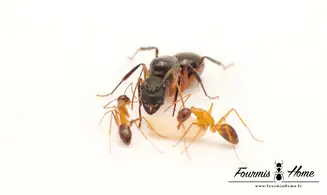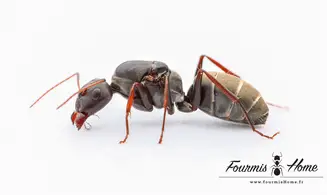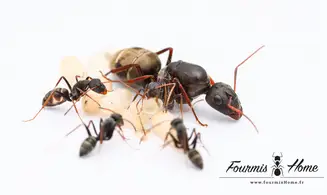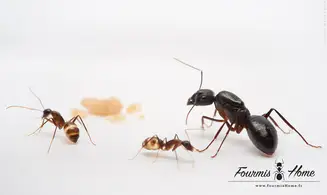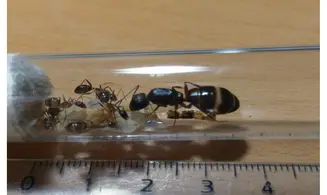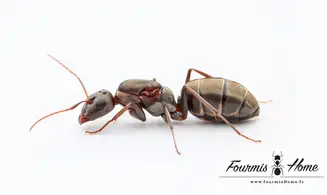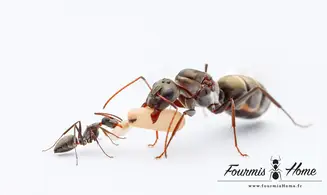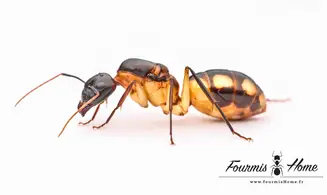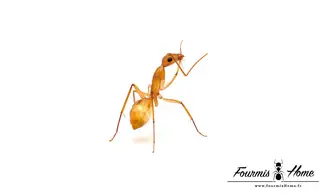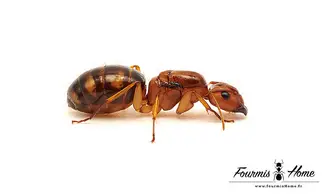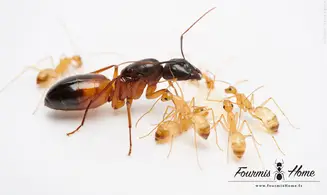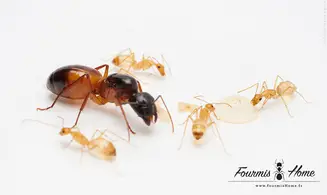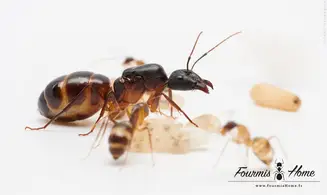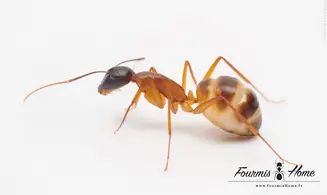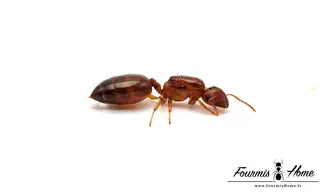Latin name: Cataglyphis niger
Taxonomy: Subfamily: Formicinae Tribes: Formicini
Breeding level: Intermediate
Geographical distribution: Africa
Habitat: sandy areas exposed to the sun, desert
Colony shape: Polygyne
Queen: Size: 14 - 15mm Color: Brick red head, thorax and black gastre
Workers: Size: 5 - 15mm Color: Red brick head, thorax and black gastre
Major: No
Male: Size: 10mm Color: Black
Food: Mainly insectivorous like mealworms, flies, mosquitoes, crickets, etc. Also honeydew for quick energy.
Humidity: Hunting area: 30 - 50% Nest: 50 - 70%
Temperature: Hunting area: 25 - 35 ° C Nest: 24 - 28 ° C
Hibernation: Yes, from mid-November to early March between 15 and 20 ° C
Nest type: Nest with tubes, reconstituted stone nest.
Description: Approaches Formica in terms of social behavior and organization, even if it could be called a little more primitive. It is an ant extreme conditions, because of the temperatures that it rubs (up to 50 ° C on the ground) and desert environments of the méditérreanéen periphery. Polygyne, from 2 to 12 queens, it forms sparsely populated nests, between 200 and 2 000 individuals. Its nests are deep and preferably built on slopes in full sun. The workers have the peculiarity of having ocelli; they have a very good vision, which allows them to orient themselves astronomically (position of the sun, of the moon in the sky) or according to the polarized light, to find the path of the nest from which they can move away more than 500 meters.
Perfectly adapted to arid environments, they also have long hairy labial palps allowing them a work of almost permanent fill: these palps help him to maintain the sand balls against the mandibles; the winds often bring a lot of sand and the floods, rare but very sudden, forcing them to evacuate the crumbled materials.
Its long legs and rapid movements give it a perfect adaptation to soils overheated by the sun: the lethal temperature for this ant, depending on the species, is around 50 ° C.
Very aggressive, her diet is mainly insectivore; it often attacks other ants (mainly the Messor that share the same biotope), it is also necrophagous (insects or animals killed by the hot weather) or consumes animal dung as needed.
They do not disdain to reap fruit if the opportunity arises.
It is marked by a strong polymorphism, the length of the workers varying from 5 to 15 mm. Female workers weigh 22 times more than the smallest workers. The large size is an ecological answer, it goes hand in hand with the reduction of the loss of water. The major reaching the size of the gyne, the latter is quite difficult to distinguish; however, it has shorter legs than the workers.
Development: There is no nuptial flight but a "bridal race"; males running after females on the ground.
Foundation: Set in a cloister (without food) Development: 45 days from egg to worker (depending on temperature)
Size of the colony: Up to 2000 individuals, the queen can reach the age of 12 years.


